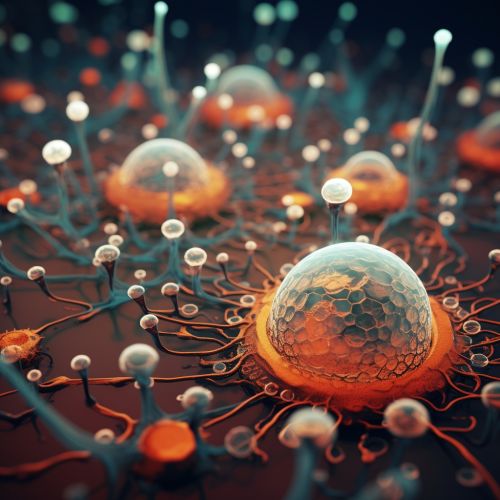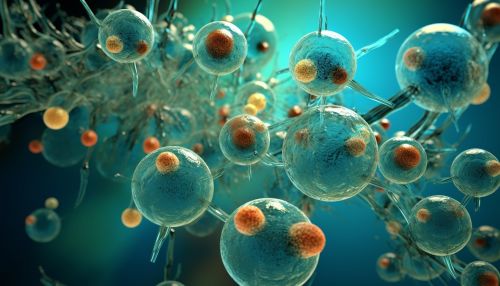Apoptotic body
Introduction
Apoptotic bodies are small, membrane-bound, cell-derived vesicles that are formed during the process of apoptosis. They are the end product of a highly regulated and complex process of programmed cell death. The formation of apoptotic bodies is a hallmark of apoptosis and is a key part of the mechanism by which dying cells signal their presence to phagocytes, which engulf and remove them.
Process of Formation
Apoptotic bodies are formed in the later stages of apoptosis. The process begins with the cell shrinking and the nucleus condensing. The cell membrane then begins to bleb, forming outward bulges. These blebs eventually separate from the cell, forming apoptotic bodies. The formation of apoptotic bodies is a complex process that involves a series of biochemical events, including the activation of caspases, a family of protease enzymes that play a crucial role in apoptosis.


Composition
Apoptotic bodies contain cellular components such as nuclear fragments, cytoplasm, and organelles. They are also rich in lipids, particularly phosphatidylserine, which is normally located on the inner leaflet of the cell membrane but is translocated to the outer leaflet during apoptosis. This translocation is a key signal for the recognition and uptake of apoptotic bodies by phagocytes.
Role in Cell Death and Clearance
The formation of apoptotic bodies is a critical step in the efficient clearance of dying cells. By packaging cellular debris into discrete vesicles, apoptosis ensures that the potentially harmful contents of dying cells are safely contained and can be removed without causing damage to surrounding tissues. The recognition and engulfing of apoptotic bodies by phagocytes is facilitated by specific 'eat-me' signals on the surface of apoptotic bodies, such as the exposure of phosphatidylserine.
Role in Disease
Abnormalities in the formation or clearance of apoptotic bodies can contribute to a variety of diseases. For example, defects in apoptotic body clearance can lead to the accumulation of cellular debris, which can trigger inflammation and autoimmunity. On the other hand, cancer cells can exploit the apoptotic process to spread by releasing apoptotic bodies that contain oncogenic material, which can be taken up by surrounding cells.
Conclusion
Apoptotic bodies are a key component of the apoptotic process and play a crucial role in the clearance of dying cells. Understanding the mechanisms of apoptotic body formation and clearance, and how these processes can go awry, is important for the development of therapies for a range of diseases.
